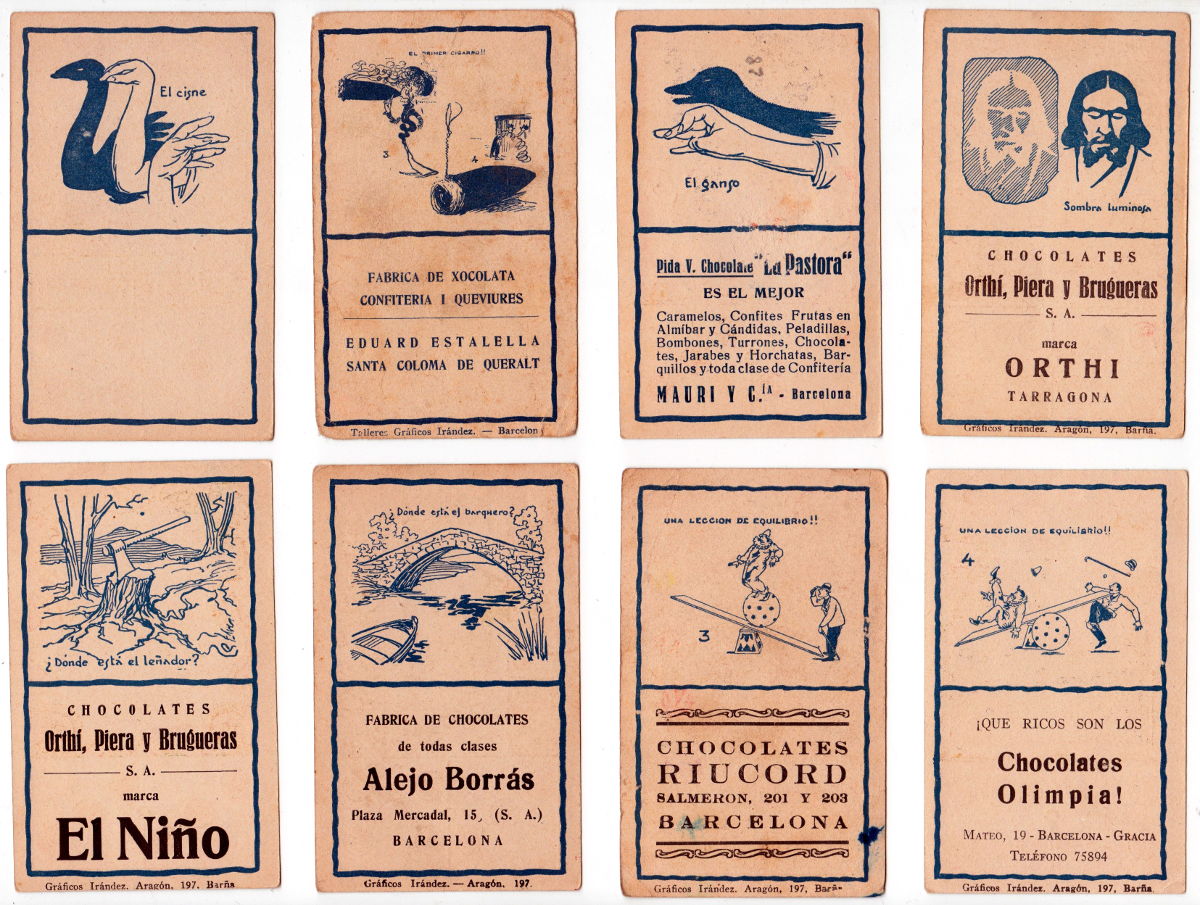Domino Cinematográfico
“Domino Cinematográfico” published by Talleres Gráficos Irández, Barcelona, c.1925.
“Domino Cinematográfico” published by Talleres Gráficos Irández, Barcelona, c.1925 features famous film stars from the era. Black & white portraits of the cinema artists are framed with colour decorations on each card, with dominoes beneath. The backs of the cards were overprinted with advertising for various chocolate manufacturers, confectioners or grocers.
Talleres Gráficos Irández also published “Artistas del Cine” movie stars playing cards advertising chocolate. Both these sets were designed by J. Passos, whose monogram appears on the double blank tile.
See also: Carreras Domino cards, 1929→

Above: “Domino Cinematográfico” published by Talleres Gráficos Irández, Aragon 197, Barcelona, c.1925. 28 cards. Images courtesy Rex Pitts.

By Rex Pitts (1940-2021)
Member since January 30, 2009
Rex's main interest was in card games, because, he said, they were cheap and easy to get hold of in his early days of collecting. He is well known for his extensive knowledge of Pepys games and his book is on the bookshelves of many.
His other interest was non-standard playing cards. He also had collections of sheet music, music CDs, models of London buses, London Transport timetables and maps and other objects that intrigued him.
Rex had a chequered career at school. He was expelled twice, on one occasion for smoking! Despite this he trained as a radio engineer and worked for the BBC in the World Service.
Later he moved into sales and worked for a firm that made all kinds of packaging, a job he enjoyed until his retirement. He became an expert on boxes and would always investigate those that held his cards. He could always recognize a box made for Pepys, which were the same as those of Alf Cooke’s Universal Playing Card Company, who printed the card games. This interest changed into an ability to make and mend boxes, which he did with great dexterity. He loved this kind of handicraft work.
His dexterity of hand and eye soon led to his making card games of his own design. He spent hours and hours carefully cutting them out and colouring them by hand.
Related Articles
Most Popular
Our top articles from the past 28 days
































